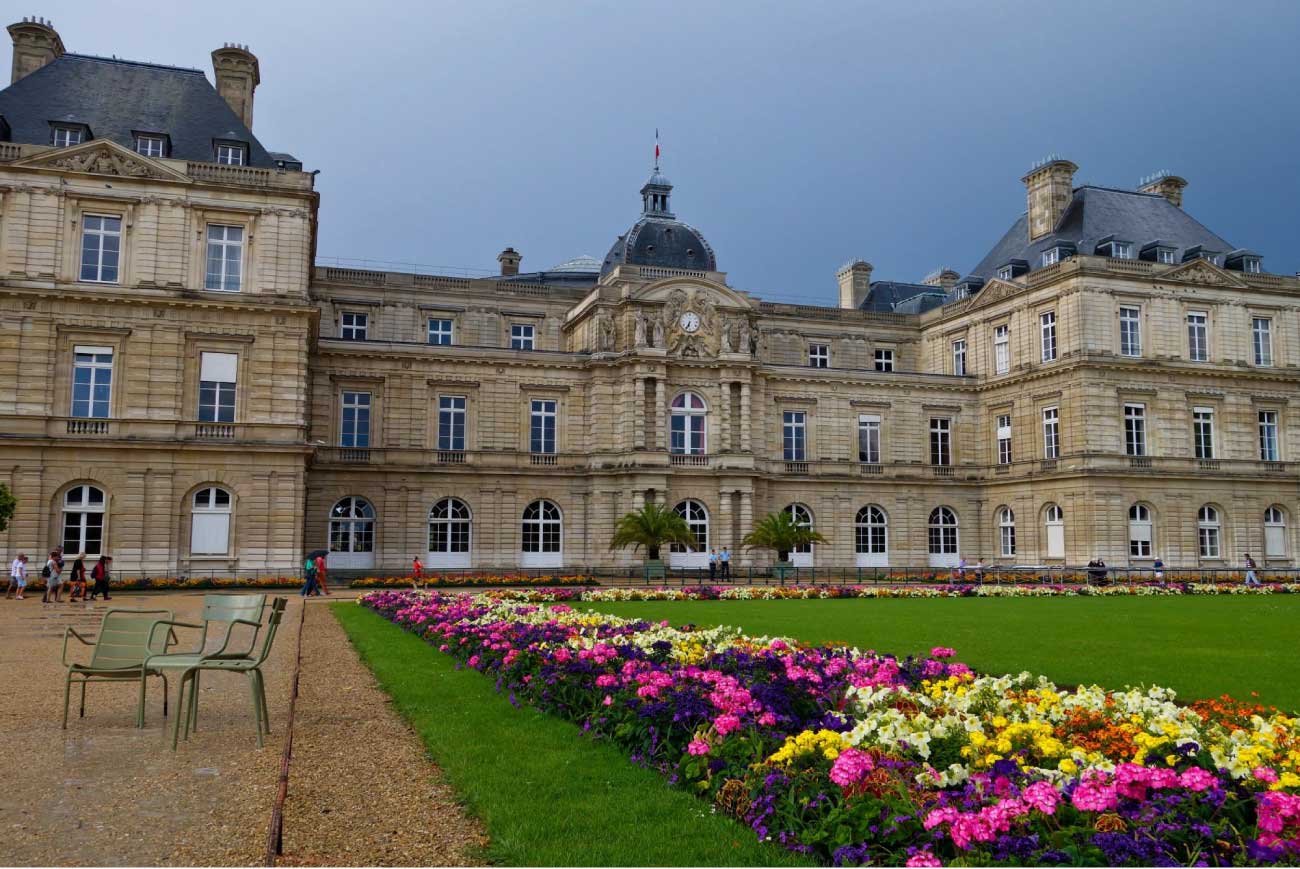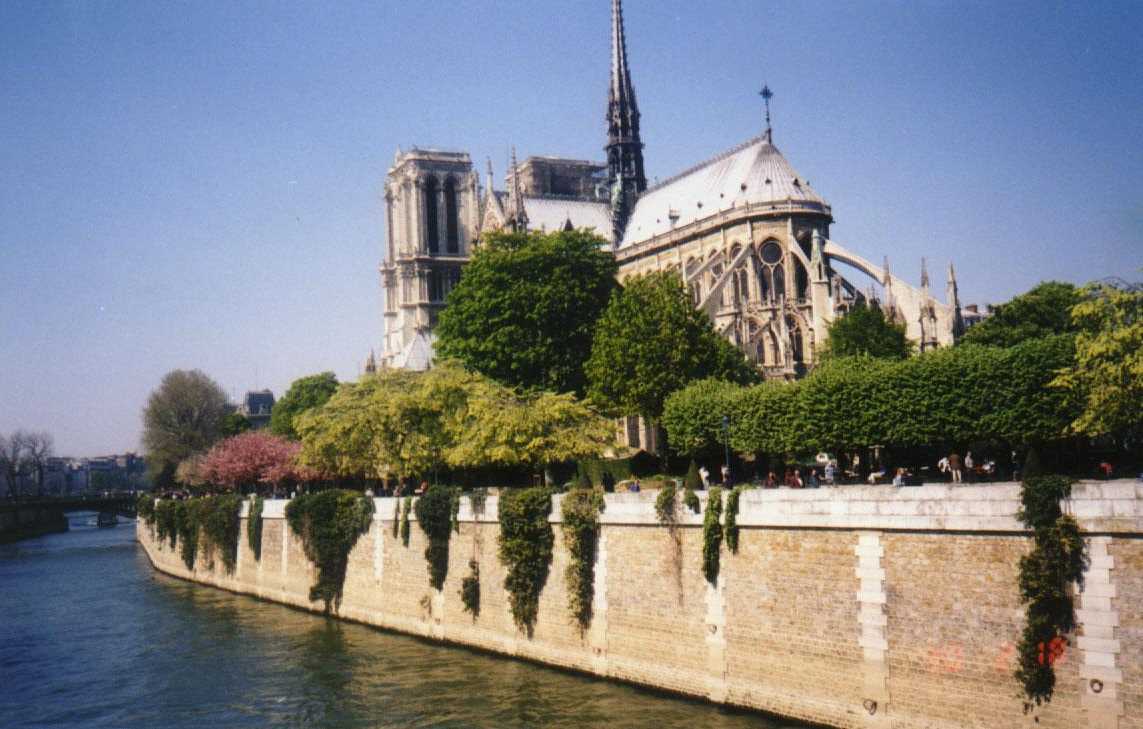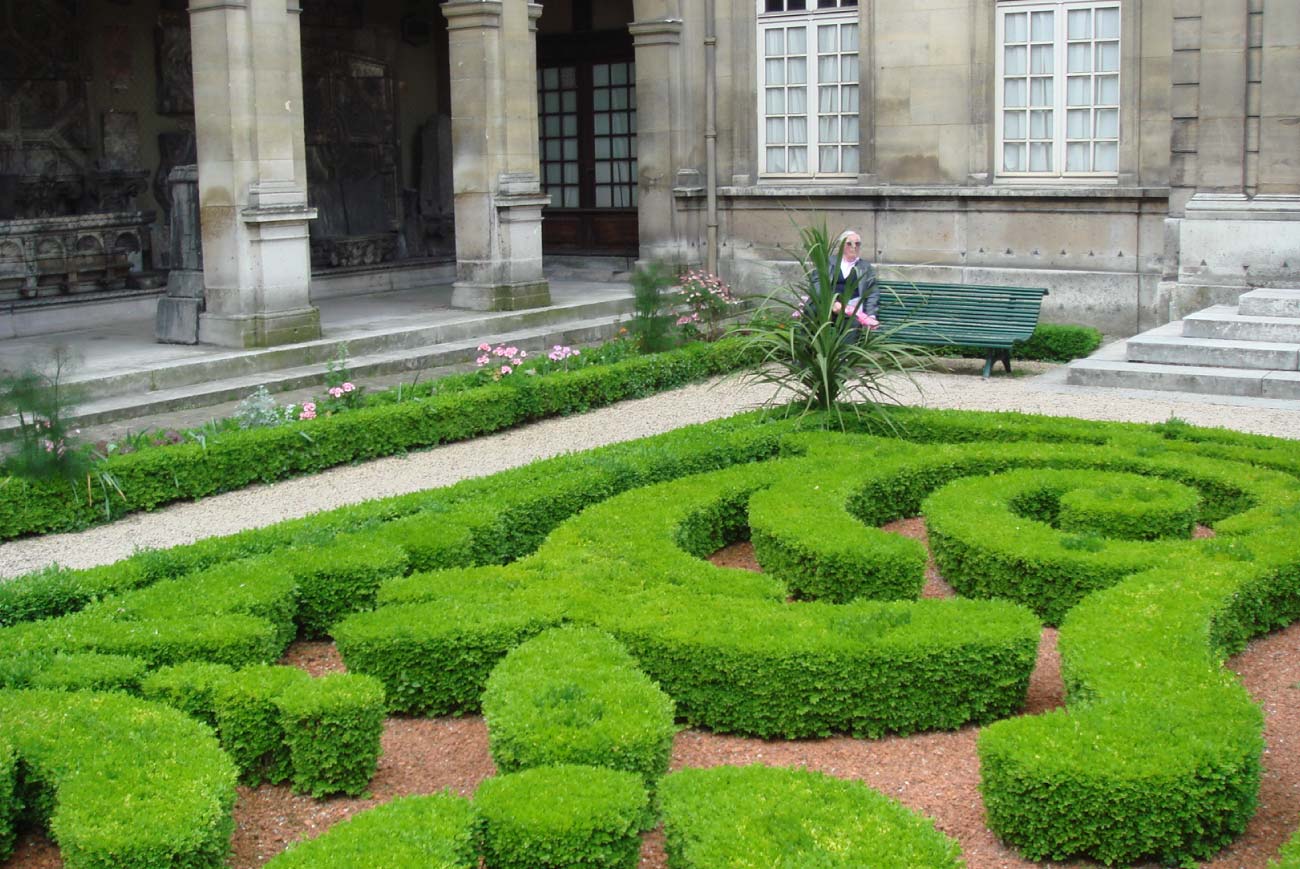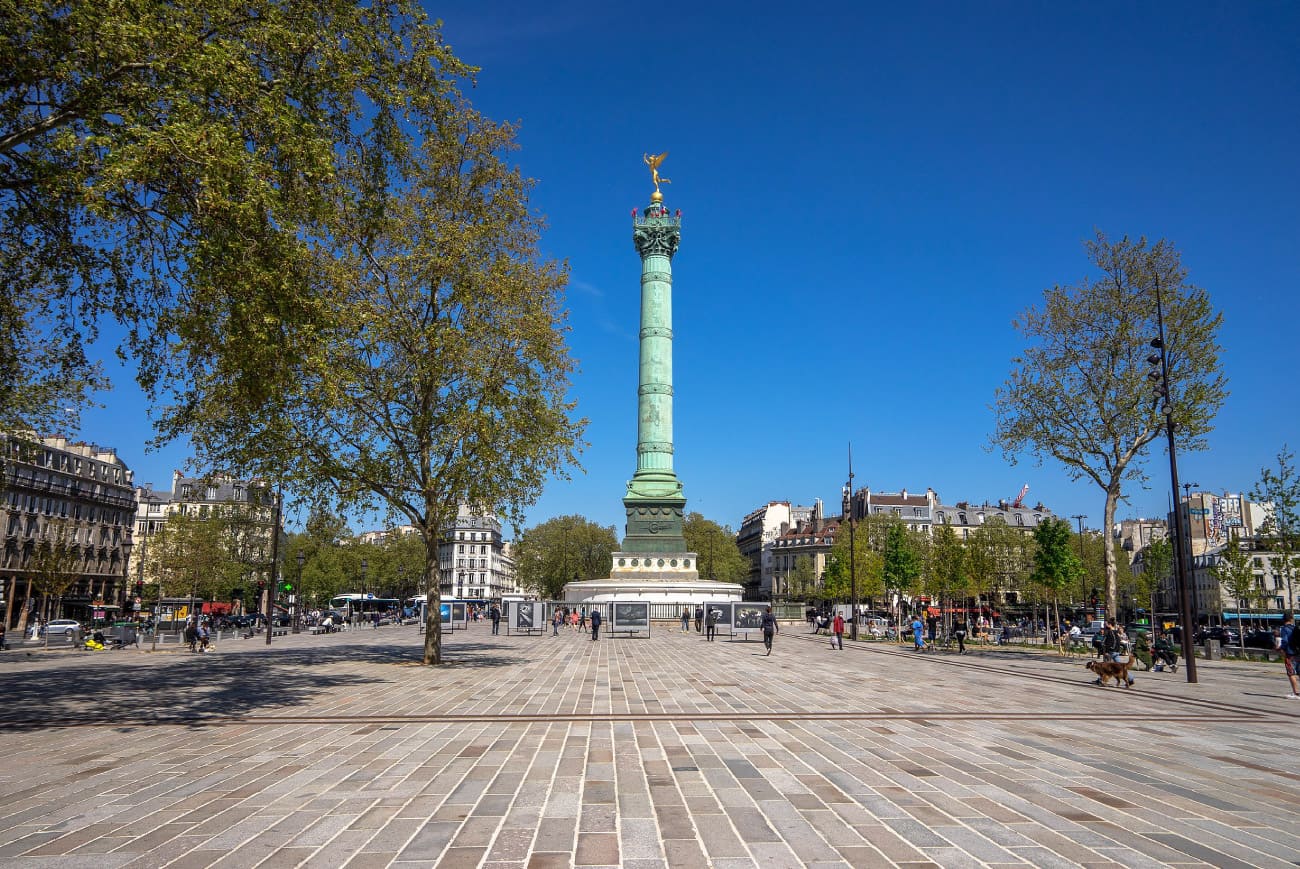Get to Know the City of Light
Left Bank
The Left Bank, or La Rive Gauche, is the chic of the chic. Situated on the edge of the city's most elegant district, the 7th arrondissement, which boasts of the Eiffel Tower and Les Invalides, it's just minutes from Saint-Germain-des-Prés and all that it has to offer. You will be surrounded by the city's best shopping, including the Left Bank's first and foremost department store, Le Bon Marché and its Grande Epicerie—a gourmand's idea of heaven.
Saint-Germain-des-Prés

Saint Germain
Saint-Germain-des-Prés is one of the city's most sought-after districts by North American visitors. Centered around the church of the former Abbey of Saint-Germain-des-Prés, it is home to a number of famous cafés, such as Les Deux Magots, Brasserie Lipp and Café de Flore, and was the center of the existentialist movement, where the likes of Jean-Paul Sartre and Simone de Beauvoir wrote for hours on end and hobnobbed with other literary giants. From this part of the 6th arrondissement, the majority of Paris' most important sights are within walking distance.
Just around the corner is the Benedictine Abbey of Saint-Germain-des-Prés, which at one time was just beyond the outskirts of early medieval Paris, and was the burial place of Merovingian kings of Nutria. Rues de Buci and Seine, a few steps away, are two of the district's primary markets and gathering places, with cafés, restaurants, shops, and fresh food markets in abundance.
Important museums are at every turn. Within walking distance is the Musée Maillol, the Musée d'Orsay, and further on across the River Seine is the Musée du Louvre. Head westbound to the National Assembly and many governments' embassies, plus the Musée Rodin, Les Invalides and the Champ de Mars. From this part of the 6th arrondissement, many of Paris' most important sights are within walking distance, including the Jardin du Luxembourg and the Eglise Saint-Sulpice.

Jardin du Luxembourg
Designer shops are within easy walking distance—Louis Vuitton, Dior, Armani, and Sonya Rykiel are at home here, to name just a few. Many of the city's finest art galleries line the nearby Left Bank streets. There's even an olympic-size indoor public swimming pool nearby (at 12, rue Lobineau), and you are right by the River Seine to easily cross to the Right Bank.
Many locals call rue de Verneuil "Magic Street." It is a food lover's paradise. Literally steps from your front door you will find an Androuet Cheese Shop, an Eric Kayser Patisserie, Le Cacaotier Artisan Choclatier, and a charcuterie. A bounty of marvelous and intriguing restaurants line the street, from the intimate and casual to the très chic! Friendly bistros share the street with superlative and adventurous French gourmet cooking.
Antique lovers and "culture vultures" will be delighted when staying here in the heart of the antiquarian area. A plethora of charming and stunning little antique shops full of French treasures are nestled among many contemporary art galleries. This street is a treasure trove of culinary, cultural and artistic delights.
Public transportation abounds on all sides including the RER regional train network which takes you to points outside of Paris such as the airports Charles de Gaulle and Orly, Disneyland Paris, and Versailles. There is no doubt you will find this part of Paris perfectly charming and convenient. The district is every visitor's dream—with everything you could ever need or desire within reach, the city of Paris and all its best entertainment at your doorstep.
Ile de la Cité

Notre Dame
The world’s most famous church, La Cathédral Notre Dame de Paris, is the spiritual and geographical center of Paris. There is a marker in the square in front of the Cathedral that designates “kilometer zero” from which all distances to and from Paris, are measured. Where better to immerse yourself in the splendor of Paris than in the very heart of the city where life began!
This is where the city houses the Prefecture de Police, the Palais de Justice, the Hôtel-Dieu hospital and Tribunal de Commerce. Only the westernmost and northeastern extremities of the island remain residential and preserve some vestiges of its 16th-century homes. From the island, you can easily reach by foot both banks of the Seine and the Ile Saint-Louis.
Right Bank
The Right Bank, or La Rive Droite, actually on the north side of the river (all confusing, but true), is more traditionally the wealthier part of Paris—that is when the Left Bank was inhabited by struggling artistic types, but this is certainly no longer true. Fourteen districts make up the Right Bank, designed in a more orderly fashion, and contains more of the well-known attractions, such as Le Louvre, l'Opéra, and Sacré Coeur.

Hotel de Ville
Le Marais
Le Marais has a history of "riches-to-rags-to-riches" having once been home to kings, then declining to a slum (the Jewish ghetto) and now once again to one of the city's chicest addresses. If it weren't for the Loi Malraux (André Malraux, Minister of Culture) of August 4, 1962, which was designed to protect the historic districts of France, the Marais would have been razed to make way for new housing. We are fortunate that the 16th-, 17th-, 18th-, and 19th-centuries-old which make up the Marais, are not only still standing, but have been renovated and gentrified to beautiful, contemporary residences for all to enjoy.
Le Marais is made up of two districts or arrondissements: the 3rd (Haut Marais) and the 4th (Bas Marais). It is a cornucopia of lifestyles and a Mecca of shopping, dining and cultural venues incomparable to other parts of the city, all within ancient walls. This is the oldest part of the city and home to many different communities—Jewish, gay, Chinese, and best of all, it’s very, very French: vibrant and teeming with life.
You will feel the centuries of French history as you stroll the narrow cobblestone streets and take in the special architectural delights of the hôtels particuliers and petite maisons in between. Any guide book or historical account will be able to describe in detail all the attractions of the district, but the real pleasure is in self-discovery. As a resident in a centuries-old building, you will be able to truly absorb all it has to offer like no other quartier can.
Haut Marais, 3rd Arrondissement
Rue de Bretagne is one of the most important life lines of the Haut Marais and is the center of activity for many of our clients' most charming pieds-à-terre. The shopping street embraces the heart of the Marais and central Paris with all the typical French commerce you could ever wish for, including many boulangeries (bakeries), a number of boucheries (butchers), poissonneries (fish markets), epiceries (grocery stores), primeurs (fruit/vegetable shops), fleuristes (flower shops), bar/tabacs (tobacco shops), cafés and lots of excellent and charming restaurants, not to mention the Marché des Enfants Rouges (corner of rue de Bretagne and rue Charlot), the oldest covered market in Paris, built in 1615, named for the red uniforms worn by the children of a neighboring orphanage.

Le Musée Carnavalet
This northern area of Le Marais is not only one of the most historical neighborhoods, but is also one of the most convenient. It is known as the "Quartier du Temple," where the Knights of Templar, a religious and military order formed in the 12th-century to protect pilgrims in the Holy Land, had a large portion of land and where their Templar Tower stood. It later became a prison for the doomed French monarchy. The Tower was razed in 1808, and the Carreau du Temple market built in its place in 1857 by Baron Haussmann, along with the Mairie for Paris Centre and the park, the Square du Temple—a great place for kids to play or relax under the trees. Not long ago the Carreau du Temple underwent a major renovation to provide a multipurpose public center.
On the western side of the district is the Centre Georges Pompidou—the National Center for Art and Culture, well known for its extensive contemporary art collection, a public library, the Atelier Brancusi, gift shop, book store and a trendy restaurant on the top level, Georges. A controversial structure which has been made architectural renown is a colorful mark on the landscape, and affords some of the finest views from the caterpillar-like exterior escalators.
On the eastern side of the district is boulevard Beaumarchais and Place de La Bastille where you will find the largest open-air market in the city (Le Marché Bastille), movie theaters and the Opéra Bastille. The area is well served by local shops and that staple of French life, cafés. The well known Cirque d'Hiver (in the 11th, but on the border of the 3rd) is also a short walk from rue de Bretagne, the Place des Vosges and Musée Picasso. The scenic Canal Saint Martin and the trendy 11th Arrondissement is also very nearby.
In the last few years, designer boutiques and art galleries have sprung up like tulips. The district has become more and more important to Paris's finest artisans. The location is central, yet not touristy, and with such a large number of transportation lines, you're only minutes away from just about every part of the city.
The apartments in this district are only minutes walk from Place de la République which offers 5 Métro lines and buses, plus plenty of commerce—all the banks are represented there as well as important merchants such as Darty, Go Sport, Grand Optical, Habitat, and many more.
Bas Marais: 4th Arrondissement

Le Place des Vosges in the Bas Marais
The Bas Marais is home to La Place des Vosges, Place de la Bastille, and Eglise Saint-Paul. A historic district protected by strict city regulations, Le Marais has gentrified over the past 50 years to become the chicest district with the finest boutiques, restaurants, and museums literally on your doorstep.
The Place des Vosges is the oldest square in Paris. Originally known as the Place Royale, the Place des Vosges was built by Henri IV from 1605 to 1612. A true square (140 m x 140 m), it embodied the first European program of royal city planning. It was built on the site of the Hôtel des Tournelles and its gardens. Today the square is planted with a bosquet of mature lindens set in grass and gravel, surrounded by clipped lindens. It is Paris' most expensive and desirable address.
Some of the most immediate attractions also include Eglise Saint-Gervais, rue des Rosiers (old Jewish Quarter), the Hôtel de Ville, Village Saint-Paul, the Musées Carnavalet, Picasso, Victor Hugo House, Maison Européenne de la Photographie, Musée d'Art et d'Histoire du Judaïsme and others, and hundreds of other sights within a few steps. The River Seine, the Ile Saint-Louis and Ile de la Cité are also just a short walk away and are part of the 4th district.
The Hôtel de Ville is the City Hall and the center of political activity. Just in front on rue de Rivoli is one of the city's most important department stores, the Bazar de l'Hôtel de Ville (BHV), famous for its complete "sous sol"(basement level), heaven for the do-it-yourselfer. L'Eglise Sainte-Merri is a 16th-century gothic church whose tower houses the oldest church bell in Paris, built for the original chapel in 1313.
The area around Village St. Paul is one Paris's most historic districts. The wall of Charles V, built from 1356 to 1383 is one of the city walls of Paris, built on the right bank of the river Seine, outside the wall of Philippe Auguste and replacing it. In the 1640s, the western part of the wall of Charles V was demolished and replaced by the larger Louis XIII wall, with the demolished material reused in the new wall. This new enclosure was totally destroyed in the 1670s and replaced by the Grands Boulevards. The rue Charles V was formerly called the rue Neuve Saint-Paul.
The Village Saint Paul, located on the western end of rue Charles V just behind the Saint Paul-Church and between rue Saint-Antoine and the Seine, is a self-contained area dedicated to peace and the art of living. This tiny block of houses with its stone streets is entirely pedestrian and accessible only through arched passageways. Here you’ll find many antique dealers with their doors open every day of the week including Sunday.
The district is teeming with museums, historic sights, restaurants, boutiques, and all the amenities one could imagine. You are in the very heart of the city with centuries-old Paris surrounding you. Be sure to visit the islands (Ile Saint-Louis and the Ile de la Cité), the area around La Bastille, Place des Vosges, and the Hôtel de Ville—and you will have more to do than time allows.
République, Place de la Bastille, Oberkampf, and the Promenade Plantée: 11th and 12th Districts

Place de la Bastille
The Bastille was torn down long ago, but today the Place de la Bastille holds the Colonne de Juillet and the Opera National de Paris Bastille, with its ultra-modern glass architecture. Cirque d’Hiver, or Winter Circus, has a venue of year-round attractions including concerts and fashion shows. Two important museums are also nearby: The Musée Picasso, showcasing the full range of the artist’s work, and the Musée Carnavalet, devoted to the history of Paris.
Rue Saint-Sébastien is in a virtually tourist-free neighborhood with restaurants, cafes, shops, patisseries, and groceries, a stone’s throw from the fashionable Marais District. In the other direction, Boulevard Richard Lenoir is just 5 minutes away with its famous street market, the largest in Paris, featuring a wide variety of foods, including cheeses, fresh produce, and meat, as well as art and crafts.
Brimming with restaurants, cafés, bars, restaurants, boutiques, and galleries, the 11th arrondissement is one of the most pleasant residential neighborhoods in Paris. Branché (hip) cafés along rue Oberkampf fill with urban Parisians and expats, while shops and galleries in the Bastille collect their own variety of locals looking for an eclectic day or night out. The largest open-air market (the Bastille Market) is just a few blocks away on boulevard Richard Lenoir between rue Saint-Sabin and place de la Bastille, on every Thursday, from 7 a.m. to 2.30 p.m. and Sunday, 7 a.m. to 3 p.m.
Le Marais and Places des Vosges are a short walk away, or head in the other direction to stroll along the Canal Saint-Martin. You will love staying in this truly Parisian part of the city where you can feel like a real resident and not just a visitor among the tourist traps.
République and the Oberkampf district are just a few stops from the Gare du Nord, the entry point for travelers flying to Charles de Gaulle airport or arriving on the Eurostar. Place de la République is not only a vibrant shopping area, it is also a Métro hub where five Métro lines converge. Within easy reach of the district is the Père Lachaise Cemetery, whose occupants include Edith Piaf, Oscar Wilde and Jim Morrison. This makes it ideal for traveling all over Paris with the minimum of fuss and a great location for vacationers.
The Promenade Plantée, a three-mile-long park with walking path and plantings on top of Viaduc des Arts, was a former railroad viaduct. Under it are artisans' studios. The Bastille Opera and Place de la Bastille are less than a ten-minute walk away, and the famous Marché dAligre, the oldest food market in Paris, is very nearby and one of four open-air markets in the vicinity.
The neighborhood is full of cafés and shops. Rue Faubourg Saint Antoine has restaurants, films, and upscale shopping. Take a shortcut through Passage du Chantier to the rue de Charonne and rue de Lappe quartier where many small restaurants are to be found, including Chez Paul and Pause Café, site of the film Chacun Cherche Son Chat (When the Cat's Away). The film presents this quartier as typically Parisian, like the people who live there. Bakeries, patisseries, antiques, supermarkets, banks, pharmacies abound in this virtually tourist-free neighborhood.
All Paris sites can be reached quickly and conveniently by nearby Métro and bus lines. Bicycle paths and Vélib stations are everywhere, making it easy to take advantage of this Paris bike-sharing program.
Rue Montorgueil

Rue Montorgueil
Rue Montorgueil is the oldest open-air shopping street in Paris and is still one of its finest and most fun. Making this district your home-away-from-home is a smart move for anyone who loves to take in the sights and sounds of the activity along the pedestrian marketplace or who is a gourmet wishing to test out his culinary talents. You will find here some of the best meat, fish, and produce markets in the city along with renowned pastry shops such as La Maison Stohrer, bistrots, cafés, bars, and boutiques.
Rue Montorgueil’s name translates to "Mount Pride" and was named after the hilly area on which the street developed. Some of the streets, such as rue Dussoubs and rue Saint-Sauveur, date back to the 11th-century. A few steps away near the Etienne Marcel Métro station is a medieval fortified tower known as the Jean Sans-Peur, erected in the early 15th-century by "Fearless Jean", the Duke of Burgundy, notorious for having assassinated his cousin, the Duke d’Orléans.
Located in the heart of Paris in the 2nd arrondissement, but still claiming a village-like atmosphere, it’s an easy walk to just about every important sight. Just north of Châtelet-les-Halles, the district is surrounded by transportation that takes you to all points of Paris and beyond. Métro lines 3 and 4 run through the district and the RER A, B, and D lines.
We will help you find your perfect Paris pied-à-terre.
Make your Paris dream a reality, starting with a consultation with Adrian or a member of the ALG Team.


